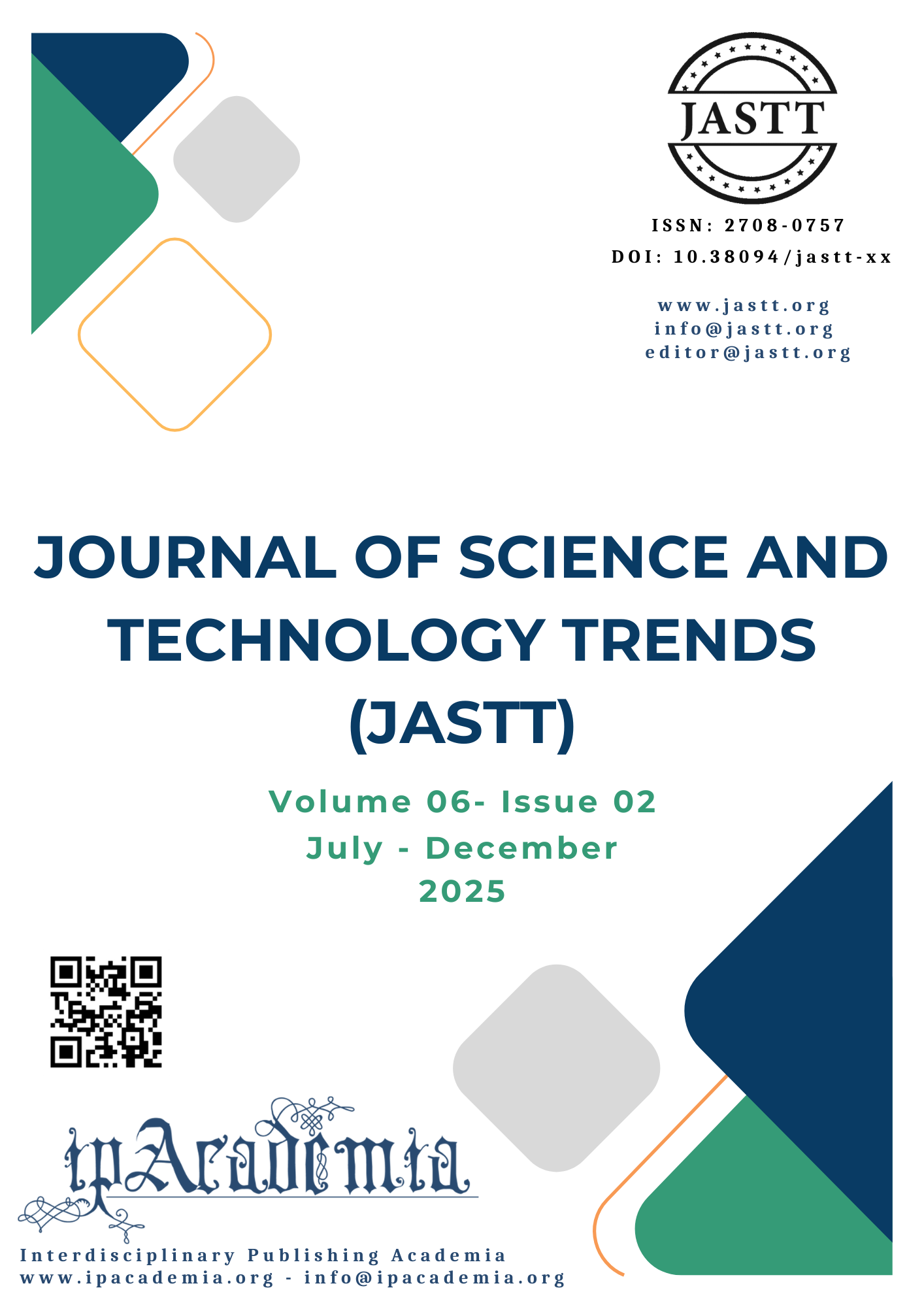OptiShip: Predictive Freight Cost Modeling Incorporating Regional Fuel Variability

Abstract
Properly estimating the cost of freight transportation has always been a challenge to the logistics sector, especially when considered in a region like India, where some factors are dynamic, such as the price of diesel, which keeps on fluctuating and the variable nature of delivery costs to be accounted for. The traditional estimation methods tend to be based on either contractual or stationary models, which do not capture spatial and time eras of fuel prices, and as such, they cannot cope with reality in the real world. The proposed study presents OptiShip, machine learning-based infrastructure that could provide realistic and situationally aware freight cost forecasts. The major goal is to improve the accuracy of cost estimation, which involves incorporating regional avenues of fuel price variability alongside the fundamental logistical components, namely distance and delivery time. The framework is based on a five-phase approach, which includes the data gathering, preprocessing, and pre-alignment of the diesel prices based on the spatial locations in terms of a KDTree model, training and analyzing of the models. To model the non-linear, multidimensional components of the relationship between the input features, three algorithms of ensemble learning, Random Forest, Gradient Boosting, and XGBoost are used. The hyperparameter tuning with the help of GridSearchCV and the evaluation of the performance of the models are performed through R2, Root Mean Square Error (RMSE), and Mean Absolute Error (MAE) scores. The Random Forest Regressor is found to be the best according to experimental results, having an R2 value of 0.97, an RMSE of 12.69 and an MAE of 4.94 which proves that it can model the actual representations of the highly accurate real-world logistic situation. The results indicate that regional economic indicators can be very useful to integrate into cost forecasting models and indicate that OptiShip could also be employed in real-time logistics platforms.
Keywords
ensemble models, freight cost, fuel pricing, logistics, machine learning
References
- I. A. Shah, N. Z. Jhanjhi, and S. K. Ray, “Artificial Intelligence Applications in the Context of the Security Framework for the Logistics Industry,” igi global, 2024, pp. 297–316. doi: 10.4018/978-1-6684-6361-1.ch011.
- Vandana. M. Dr. Nagaraju Ellaturu Naveena M, and Dr. T. L. K. M. Rajalakshmi Dr. Shweta Bambuwala, “Ai-Driven Solutions for Supply Chain Management,” Journal of Informatics Education and Research, vol. 4, no. 2, May 2024, doi: 10.52783/jier.v4i2.849.
- X. Mou, Artificial Intelligence: Investment Trends and Selected Industry Uses. finance corporation washington dc, 2019. doi: 10.1596/32652.
- T. Olatunde, Z. Sikhakhane, D. Akande, and A. Okwandu, “Reviewing The Role Of Artificial Intelligence In Energy Efficiency Optimization,” Engineering Science & Technology Journal, vol. 5, no. 4, pp. 1243–1256, Apr. 2024, doi: 10.51594/estj.v5i4.1015.
- A. S. Shatat and A. S. Shatat, “Artificial Intelligence Competencies in Logistics Management: An Empirical Insight from Bahrain,” Journal of Information & Knowledge Management, vol. 23, no. 01, Nov. 2023, doi: 10.1142/s0219649223500594.
- T. V and D. Krisknakumari, “Artificial Intelligence in Enhancing Operational Efficiency in Logistics and SCM,” International Journal of Scientific Research in Science and Technology, vol. 11, no. 5, pp. 316–323, Oct. 2024, doi: 10.32628/ijsrst24115107.
- W. Guo, “Exploring the Value of AI Technology in Optimizing and Implementing Supply Chain Data for Pharmaceutical Companies,” Innovation in Science and Technology, vol. 2, no. 3, pp. 1–6, May 2023, doi: 10.56397/ist.2023.05.01.
- R. Siddiqui, “Quantifying the Impact of Development of the Transport Sector in Pakistan,” The Pakistan Development Review, vol. 46, no. 4II, pp. 779–802, Apr. 2024, doi: 10.30541/v46i4iipp.779-802.
- S. Singh, S. Luthra, A. Kumar, A. Barve, and K. Muduli, “Evaluating Roadblocks to Implementing a Green Freight Transportation System: An Interval Valued Intuitionistic Fuzzy Digraph Matrix Approach,” IEEE Transactions on Engineering Management, vol. 71, pp. 2758–2771, Jan. 2024, doi: 10.1109/tem.2022.3188643.
- N. L. Rane, J. Rane, S. K. Mallick, and Ö. Kaya, “Applications of machine learning in healthcare, finance, agriculture, retail, manufacturing, energy, and transportation: A review,” deep science, 2024. doi: 10.70593/978-81-981271-4-3_6.
- J. Fu, H. J. Bhatti, and A. Nåbo, “Locating charging infrastructure for freight transport using multiday travel data,” Transport Policy, vol. 152, pp. 21–28, Apr. 2024, doi: 10.1016/j.tranpol.2024.04.007.
- M. Su, H. J. Lee, X. Wang, and S.-H. Bae, “Fuel consumption cost prediction model for ro-ro carriers: a machine learning-based application,” Maritime Policy & Management, vol. 52, no. 2, pp. 229–249, Jan. 2024, doi: 10.1080/03088839.2024.2303120.
- E. Liachovi?ius, E. Šabanovi?, and V. Skrickij, “Freight Rate And Demand Forecasting In Road Freight Transportation Using Econometric And Artificial Intelligence Methods,” Transport, vol. 38, no. 4, pp. 231–242, Dec. 2023, doi: 10.3846/transport.2023.20932.
- N. L. Rane, M. Paramesha, J. Rane, and P. Desai, “Artificial intelligence, machine learning, and deep learning for sustainable and resilient supply chain and logistics management,” deep science, 2024. doi: 10.70593/978-81-981367-4-9_5.
- A. Atadoga, O. Obi, A. Daraojimba, F. Osasona, S. Dawodu, and S. Onwusinkwue, “AI in supply chain optimization: A comparative review of USA and African Trends,” International Journal of Science and Research Archive, vol. 11, no. 1, pp. 896–903, Jan. 2024, doi: 10.30574/ijsra.2024.11.1.0156.
- S. Krishnamurthy, K. Tirupati, E. Shrivastav, S. Jain, S. Ganipaneni, and P. Vashishtha, “Leveraging AI and Machine Learning to Optimize Retail Operations and Enhance,” Darpan International Research Analysis, vol. 12, no. 3, pp. 1037–1069, Sep. 2024, doi: 10.36676/dira.v12.i3.140.
- A. A. Abdullah, N. S. Mohammed, M. Khanzadi, S. M. Asaad, Z. Kh. Abdul, and H. S. Maghdid, “In-depth analysis on machine learning approaches,” ARO-The Scientific Journal of Koya University, vol. 13, no. 1, pp. 190–202, May 2025, doi: 10.14500/aro.12038.
- S. M. Asaad, H. S. Maghdid, and Z. Kh. Abdul, “Hybrid positioning technique using the existing Wi-Fi and LoRa technologies (Wi-Lo),” Expert Systems With Applications, p. 127127, Mar. 2025, doi: 10.1016/j.eswa.2025.127127.
- R. A. Saleh and S. R. M. Zeebaree, “Transforming Enterprise Systems with Cloud, AI, and Digital Marketing,” International Journal of Mathematics Statistics and Computer Science, vol. 3, pp. 324–337, Mar. 2025, doi: 10.59543/ijmscs.v3i.13883.
- K. Sudhir, “Fuel price in India,” Kaggle, Jan. 27, 2021. https://www.kaggle.com/datasets/sudhirnl7/fuel-price-in-india/data
- Devaraj V, “Delhivery Logistics Dataset,” Kaggle, Jun. 03, 2024. https://www.kaggle.com/datasets/devarajv88/delhivery-logistics-dataset
